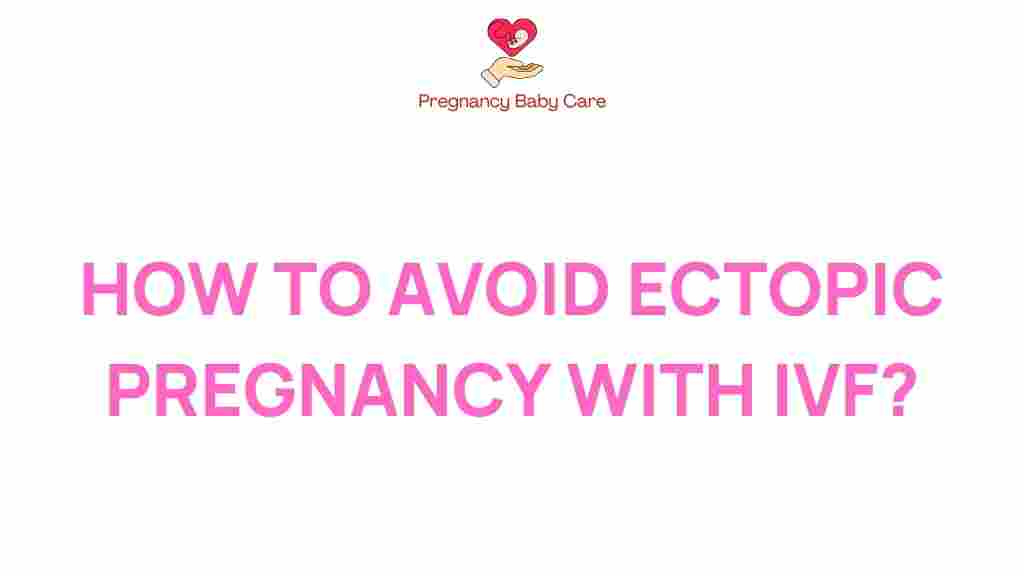In the realm of reproductive health and assisted reproduction, the journey to parenthood can be both exciting and fraught with challenges. One of the significant concerns for couples undergoing fertility treatment, particularly In Vitro Fertilization (IVF), is the risk of ectopic pregnancy. Understanding what ectopic pregnancy entails, its risks, and how to minimize these risks during IVF is crucial for anyone considering family planning. This article will explore the nature of ectopic pregnancies, the IVF process, and essential precautions to take to ensure a healthy pregnancy.
Understanding Ectopic Pregnancy
An ectopic pregnancy occurs when a fertilized egg implants outside the uterus, most commonly in a fallopian tube. This condition poses serious health risks to the mother and can lead to pregnancy complications if not addressed promptly. Knowing the signs and risks associated with ectopic pregnancies can empower individuals undergoing IVF to take proactive steps in their fertility journey.
Symptoms of Ectopic Pregnancy
Recognizing the symptoms of ectopic pregnancy is vital for early intervention. Common symptoms include:
- Sharp or stabbing pain in the abdomen or pelvis
- Vaginal bleeding or unusual discharge
- Dizziness or fainting
- Shoulder pain
- Urge to have a bowel movement
If you experience any of these symptoms, it is crucial to seek immediate medical attention.
The IVF Process: A Step Towards Parenthood
IVF is a common fertility treatment that involves several steps to help couples conceive. Here’s a brief overview of the IVF process:
Step 1: Ovarian Stimulation
In this initial phase, medications are administered to stimulate the ovaries to produce multiple eggs. This is critical for increasing the chances of successful fertilization and embryo development.
Step 2: Egg Retrieval
Once the eggs are ready, a minor surgical procedure is performed to retrieve them from the ovaries. This is typically done under sedation.
Step 3: Fertilization
The retrieved eggs are then fertilized with sperm in a lab setting. This can be done through traditional insemination or Intracytoplasmic Sperm Injection (ICSI), where a single sperm is directly injected into an egg.
Step 4: Embryo Development
After fertilization, embryos are monitored for growth and development over several days. The healthiest embryos are selected for transfer.
Step 5: Embryo Transfer
The selected embryo(s) are transferred into the uterus. This procedure is relatively simple and does not require anesthesia.
Step 6: Pregnancy Test
About two weeks after the embryo transfer, a blood test is performed to determine if implantation has occurred and if the woman is pregnant.
Minimizing the Risk of Ectopic Pregnancy with IVF
While IVF can significantly enhance the chances of conception, it is essential to understand how to minimize the risks associated with ectopic pregnancy. Here are some strategies to consider:
1. Comprehensive Pre-Treatment Evaluation
Before starting IVF, a thorough evaluation of reproductive health is crucial. This includes:
- Pelvic ultrasound to assess the condition of the uterus and fallopian tubes
- Hysterosalpingography (HSG) to check for blockages in the fallopian tubes
- Review of medical history to identify any previous ectopic pregnancies or reproductive issues
2. Monitoring Throughout the IVF Process
Close monitoring during the IVF process can help identify potential problems early. Regular check-ups should include:
- Blood tests to monitor hormone levels
- Ultrasounds to track the development of the follicles and embryos
3. Choosing the Right Embryo Transfer Method
The method of embryo transfer can influence the risk of ectopic pregnancy. Some clinics may recommend:
- Transferring a single embryo to decrease the chance of multiple pregnancies, which can complicate the situation
- Using a skilled physician for the transfer procedure to ensure optimal placement
4. Post-Transfer Care
After embryo transfer, it’s essential to follow your physician’s recommendations for post-care, which may include:
- Avoiding strenuous activities
- Taking prescribed medications as directed
- Regular follow-ups to monitor early pregnancy signs
Troubleshooting: What to Do If You Experience Symptoms
If you experience any symptoms indicative of an ectopic pregnancy after undergoing IVF, it is essential to act promptly. Here’s a step-by-step guide:
1. Seek Immediate Medical Attention
Contact your healthcare provider or go to the nearest emergency room. Describe your symptoms in detail to receive appropriate care.
2. Undergo Diagnostic Tests
Doctors may perform several tests, including:
- Blood tests to check hormone levels
- Ultrasounds to locate the embryo
3. Follow Medical Advice
Based on the results, your doctor will recommend the best course of action, which may include:
- Medication to help resolve an ectopic pregnancy
- Surgery if there is a significant risk or if the condition is severe
The Role of Reproductive Health in Family Planning
Understanding reproductive health is vital for effective family planning. Couples considering IVF should educate themselves on:
- Their fertility status and any potential health risks
- The implications of previous reproductive issues, such as ectopic pregnancy
- Available fertility treatments and their success rates
For more information on reproductive health, you can visit this resource.
Conclusion
Navigating the complexities of IVF and the associated risks of ectopic pregnancy requires diligence and awareness. By understanding the IVF process, recognizing the symptoms of ectopic pregnancy, and taking proactive measures to mitigate risks, couples can enhance their chances of a successful and healthy pregnancy. Reproductive health plays a critical role in family planning, and being informed is your best ally on this journey towards parenthood.
For further insights into fertility treatments and reproductive health, check out this informative article.
This article is in the category Pregnancy and created by PregnancyBabyCare Team
